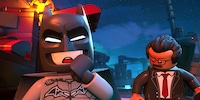
Background information
Lego fans can look forward to three exciting games with the colourful blocks
by Michelle Brändle

Lego minifigures have become a mainstay of children’s bedrooms and collectors’ display cases. Their history and diversity have fascinated generations. This is the story of how a toy became a sought-after cult item.
Since their launch in 1978, Lego minifigures have been permanent fixtures. These small figures have evolved from simple, rigid models into complex characters with their own personalities and stories. Originally intended to breathe life into the colourful Lego worlds, for many they have now become a nostalgic symbol of their childhood and collector’s items.
In the 1960s and early 1970s, Lego focused primarily on houses and vehicles. The actual forerunner of today’s minifigures, known as the «Lego Building Figure», came onto the market in 1974. These figures had a circular, yellow head with painted facial features and movable arms. The torso and legs were assembled from Lego bricks. These early figures were very popular, especially set number 200, which included a small Lego family – mother, father, children and grandmother. This set marked an important step in Lego’s development, laying the foundation for the later, detailed and versatile minifigures.
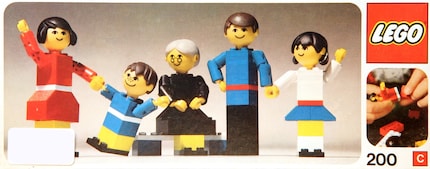
1978 was a turning point for Lego when the company introduced the first modern minifigure. These figures had movable limbs – arms and legs could now be positioned, giving the figures more dynamism and expressiveness. The classic, smiling face became the trademark of these minifigures and shaped the image that many still have of Lego today.
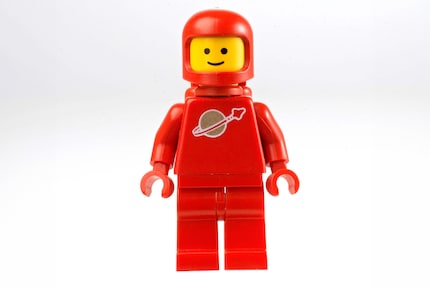
This new minifigure made its debut in various sets such as «Town», «Space» and «Castle», each containing their own customised version. The introduction of these figures allowed children to not only populate their buildings with characters, but also to create complex scenarios and role-playing games.
The design of the minifigures was further refined over the following years. 1989 was another important year, during which Lego significantly revised the minifigures. With the introduction of the Pirate series, characters received new facial features that went beyond the classic smile. These minifigures now had features such as beards, eye patches and various facial expressions that made them much more individual.
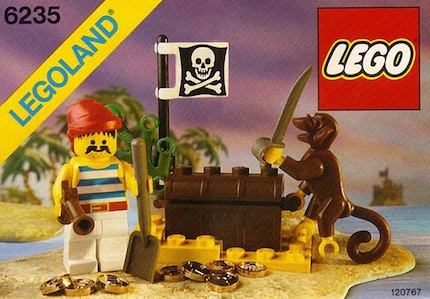
This phase marked the beginning of increasing diversity in minifigure design. Lego experimented with different body shapes, accessories and even different skin colours instead of the signature yellow to make the characters more realistic. Over time, the minifigures became more collectible, and Lego began releasing special editions and series aimed at an older audience.
Another significant step in the evolution of minifigures was the introduction of licensed products. In 1999, Lego entered a new era with a licensing agreement when the Star Wars series was introduced. This was the first time Lego produced sets based on a film franchise. The Star Wars minifigures were a sensation among fans of the franchise. They revolutionised the way Lego designs its themes and characters.
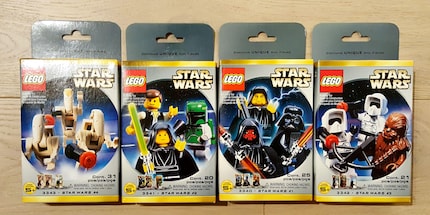
The licensing agreements gradually expanded to include other big names such as Harry Potter, Indiana Jones, Marvel Super Heroes und DC Comics, making the minifigures more diverse and culturally relevant. Each new series brought with it its own unique designs and specialised parts. This made collecting and sharing minifigures an exciting hobby.
In addition to expanding the Lego universe, the licensed products influenced how themes and character development were handled in the sets. This meant that the minifigures not only became toys, but also sought-after collector’s items.
The Lego minifigure collectible market has evolved into its own dynamic world, where both emotional connection and financial value play a role. Limited editions and exclusive releases increase the appeal and market value. An example of this is the Mr. Gold minifigure, which is currently one of the most sought-after and expensive minifigures due to its limited run of only 5,000 pieces.
A character’s history and background can influence its value. Minifigures depicting historical figures or culturally significant characters, such as those from the «Star Wars» series, often attract a broader range of collectors. These figures are popular not only with Lego lovers but also with film and history fans, further increasing their value and boosting demand.
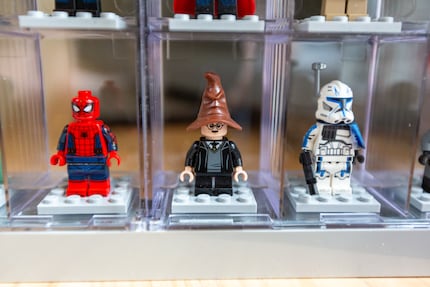
Ultimately, the community also plays a major role in the collectors’ market. Collectors use platforms and forums to exchange ideas, trade rarities and organise special exchange events. These communities provide a platform both for trading and for exchanging knowledge and experiences, making collecting a social and enriching hobby.
These factors create a vibrant collecting culture that combines both financial investment and personal passion. This makes Lego minifigures more than just toys; they’re a piece of cultural history.
Lego minifigures provide a platform for creativity and storytelling for both children and adults. Since they were first introduced, these figures have evolved and have long been an integral part of many Lego sets, delighting fans worldwide. The fascination with minifigures lies not only in their variety or their collectible value, but also in the personal memories they can evoke. Many adults see them as a piece of their childhood, while children see them as heroes and characters from their favourite stories.
The collectors’ market for these figures shows how high the interest in them is. Although some of them are particularly valuable, their real value often lies in the personal connection and enthusiasm that people have for these small plastic figures.
Do you have a favourite character or a memory that you associate with a Lego minifigure? Share your story in the comments!
I get paid to play with toys all day.
Interesting facts about products, behind-the-scenes looks at manufacturers and deep-dives on interesting people.
Show all
Background information
by Michelle Brändle
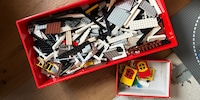
Background information
by Martin Jungfer
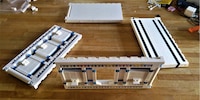
Background information
by Daniel Ramm